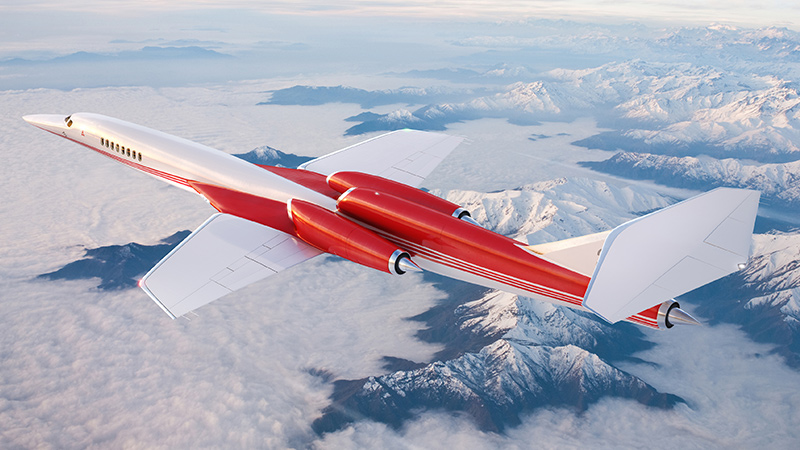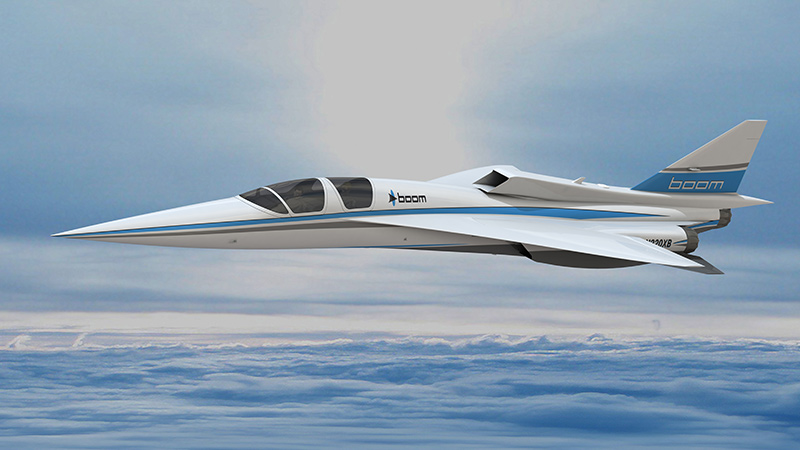Stay Up to Date
Submit your email address to receive the latest industry and Aerospace America news.
Congress and NASA are taking steps to give a proposed generation of civilian supersonic jets a chance to fly over land, although some in the aerospace community question whether airlines could attract enough customers to make commercial supersonic flight a viable business.
The FAA bans civilian supersonic flights over land to avoid noise pollution from the thunderous sound of a sonic boom that can roll for 40 kilometers in the direction of both sides of those jets, but lawmakers may soon require the agency to re-evaluate that speed limit. If the re-evaluation is eventually signed into law as part of the FAA reauthorization act, the move would mesh with technology work NASA has underway to lower that sonic boom to a less intrusive sonic thump.
The House and Senate are poised to schedule floor votes on their versions of the FAA reauthorization bills, each of which includes language that would require the agency to study the merits of supersonic flights over land and report back to Congress. The provision has support from high-ranking lawmakers as part of this legislation that authorizes appropriations for FAA and gives policy direction.
Companies designing supersonic jets are moving forward with the hope that people will pay a premium for less travel time.
Boom Technology, based in Centennial, Colorado, in 2018 aims to test the XB-1, a prototype version one-third the size of a supersonic airliner it hopes to debut and certify in the early 2020s that could carry people across ocean routes at Mach 2.2. “A businesswoman could take off in New York, land in Los Angeles in time for a breakfast meeting, stay through early afternoon, and be home in time to tuck her kids in at night,” says Eli Dourado, a spokesman for Boom and co-author of a research paper on commercial supersonic flight published in October for the Mercatus Center at George Mason University.
Companies building civilian supersonic jets, including Reno-based Aerion, Boom and Savannah-based Gulfstream Aerospace, aim for their planes to fly on the currently permitted transoceanic flights, but even more business opportunities would open for them if the supersonic speed limit were eased or lifted. Those three companies encourage technical discussion and policy development on the issue as part of the Aerospace Industries Association’s Supersonic Working Group.
The private jet market of the wealthy would be a start, but broader success would mean avoiding the Concorde scenario. Those supersonic planes flew commercially between 1976 and 2003 but failed to generate profit for British Airways or Air France. Part of the solution, advocates say, will come from today’s new composite materials and propulsion technologies, which will keep maintenance and production costs down. Achieving acceptable ticket prices also will require boosting the number of routes compared to the Concordes, which flew regular routes supersonically over the Atlantic Ocean but were not permitted to fly supersonically over land.
Traveling over water at supersonic speeds and slowing to less than Mach 1 over land is “a niche market,” says Jaiwon Shin, associate administrator for NASA’s Aeronautics Research Mission Directorate. Major commercial airlines would likely not be able to make money under the current bans on supersonic flight over land in the U.S. and Europe, he says. “What NASA is working on with industry partners is really to make supersonic flight just like subsonic commercial flight,” Shin says. “For that, economically, you have to open up [over-land flight routes].”
NASA plans to build a supersonic X-plane with low-boom aerodynamic technology and measure its ability to turn a sonic boom to a thump. Responses will be requested from communities near the test flights. The experimental plane could start flying as early as 2021, and Shin says NASA aims to provide scientifically validated data to the International Civil Aviation Organization by 2023 to inform the “global issue” whether — and under what circumstances — to allow supersonic flights over land.
The business model for supersonic commercial transport remains uncertain, however, even if quiet supersonic technology encourages regulators to ease the speed limit, says Richard Aboulafia, vice president of analysis at the Teal Group aerospace research firm in Virginia.
“While there’s almost certainly some kind of market for supersonic private transport, that’s not a slam-dunk business case either,” Aboulafia says.
Editor’s note: The image at the top of this story is an artist’s rendering of Boom Supersonic’s XB-1 Supersonic Demonstrator, a subscale prototype of the Boom supersonic passenger airliner.
“What NASA is working on with industry partners is really to make supersonic flight just like subsonic commercial flight. For that, economically, you have to open up" over-land flight routes.
Jaiwon Shin, associate administrator for NASA’s Aeronautics Research Mission Directorate
About Tom Risen
As our staff reporter from 2017-2018, Tom covered breaking news and wrote features. He has reported for U.S. News & World Report, Slate and Atlantic Media.
Related Posts
Stay Up to Date
Submit your email address to receive the latest industry and Aerospace America news.





